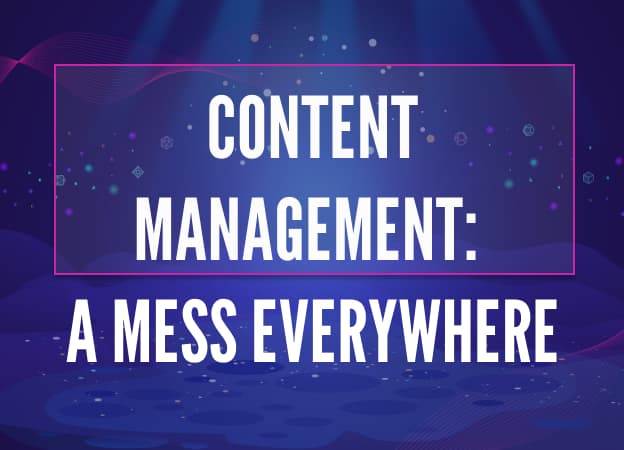Creating content and publishing it on the web can be a challenging task. That's why new tools and solutions are constantly emerging, each offering unique paths to make the process smoother and more efficient. Adobe Franklin is one such tool that has caught the attention of Adobe Experience Manager (AEM) users. Let's explore Adobe Franklin's potential and examine how it may fit into your content creation and publishing workflow.
Adobe Franklin integrates familiar word processing tools such as Google Docs or Microsoft Word while using GitHub for configuration and styling. This approach allows content creators to utilize tools they're already familiar with for authoring.
The standout features of Adobe Franklin are its ability to instantly render content, eliminating the need for time-consuming rebuilding processes. Say goodbye to wasted time– and hello to practical and efficient content creation. Project Franklin also takes it further by bypassing manual content copying since “working documents” become the content record; empowering team members and boosting productivity.
How Does Adobe Franklin Work?
Let’s look at the step-by-step process for using Adobe Franklin:
- Connect your Adobe Experience Manager (AEM) instance with Microsoft Office or Google Docs
- Configure your sites reusable CSS, HTML, and JavaScript blocks
- Draft and structure your content by specifying elements like titles, headings, tables, and more
- Franklin then dynamically transforms this content and renders it as a web page
Through this approach teams benefit from the collaboration features native to their preferred platforms and simplified digital asset management. This leads to faster web development and easier deployment.
Adobe Franklin represents a shift in how we approach content creation and management. It offers businesses and content creators a more efficient and user-friendly experience.
Speeding Up Content Creation Without Sacrificing Quality
As Adobe seeks to create more flexibility and speed for content creation there is consequently a move away from traditional content modeling. However, there is yet a way to reconcile this cost.
Deliberate content modeling unlocks emergent business and customer benefits when implemented. To name a few: improved consistency, increased management capabilities, effective adaptability, expanded personalization, facilitating reusability, and offering scalability. Check out our Content Modeling page for more resources diving into these topics.
So, how do we not lose these important features from content modeling? [A] posits that you still need and practice content modeling while using this new Adobe product. Importantly, this still does not slow authors down.
Teams should model and map their domain and the content types they need and use. Define the relationships between content elements and determine their schema mark-up. Create your metadata profiles and discover where they are reused.
Once you have your initial content model, then work with the authoring teams to generate starting templates. The initial formatting will already be in place letting authors move at full speed while still able to adapt and create ad-hoc adjustments.
Yet you can still retain the massive beneficial features of content modeling and apply the necessary mark-up, metadata, semantic, or taxonomy information by managing a Core Content Model.
Although this approach and benefits are attainable with traditional modeling methods, using the tool CoreModels lets you configure and connect your model automatically with your content stack. The initial modeling exercise is important to content success, but teams also need to maintain and evolve the model over time. If the model stays siloed in its own corner it will not be able to elevate the content. That is why [A] developed CoreModels as part of the Schematica suite.
By using a configurable and mappable system of modeling your content, teams discard the burden of manual model amending. This approach extracts the pull potential and impact of content models while also enabling the most effective way teams can update their models as it necessitates change.
Embracing Efficiency: The Future of Content Publishing with AEM Franklin
Project Franklin represents an exciting step forward in improving the authoring experience within AEM. If you've ever found the AEM platform challenging, smoother content publishing could become a reality.
While AEM Franklin is a simple CMS architecture, it is strategically designed to optimize content delivery speed and webpage efficiency. The time and resource savings from improving content creation processes should be reinvested to balance out and bolster the modeling and engineering side of content assembly. With these two variables working arm-in-arm, the exponential benefits compound.
The road ahead holds the promise of exciting times for AEM users. They now have the opportunity to explore a new and faster way to publish content with AEM, streamlining their workflows and achieving their digital objectives more efficiently. Although AEM enterprise licenses will have access to implement Adobe Franklin, it is not automatically included so users won't notice anything different unless it's implemented.
Adobe Franklin represents an exciting step forward, balancing authoring speed and flexibility with its composable architecture, data-driven approach, and cloud-native architecture.
Content creators can leverage these unique technological capabilities to increase agility, reduce costs, and boost collaboration. This is a big step on the path to more nimble content management and processes. As the product continues to evolve and expand, Adobe Franklin has the potential to become an indispensable tool for digital experience professionals seeking to maximize productivity and efficiency in an evolving digital landscape. For content publishers, it brings the promise of faster, more flexible, and more scalable content production that meets emerging needs.
For those ready to capture these benefits of Adobe Franklin, [A] offers our unique combination of content operation services and support software. We are building a practice to meet this emerging tech and enable clients to capture its full impact. If you would like to be part of this initial client set, please connect with us.



